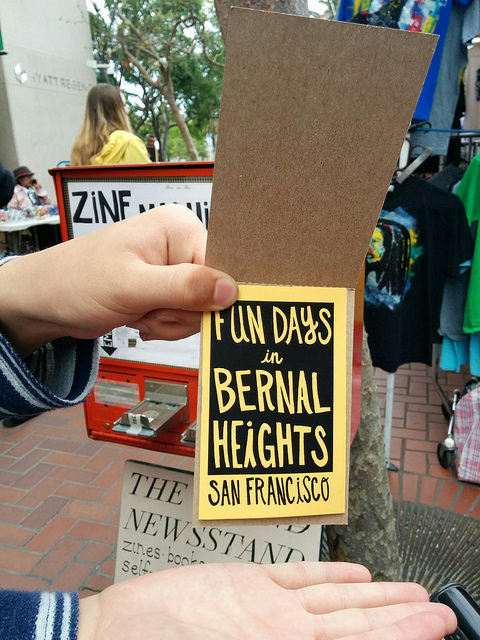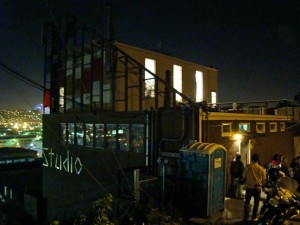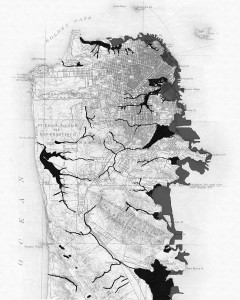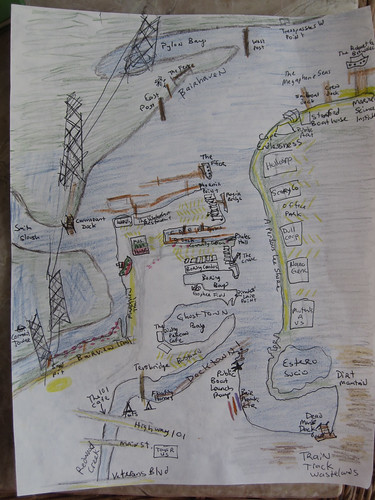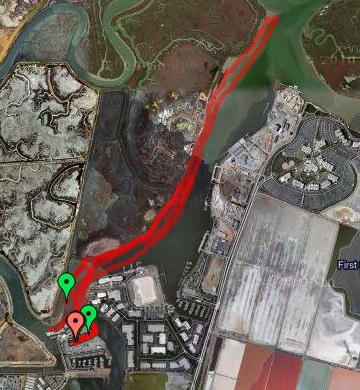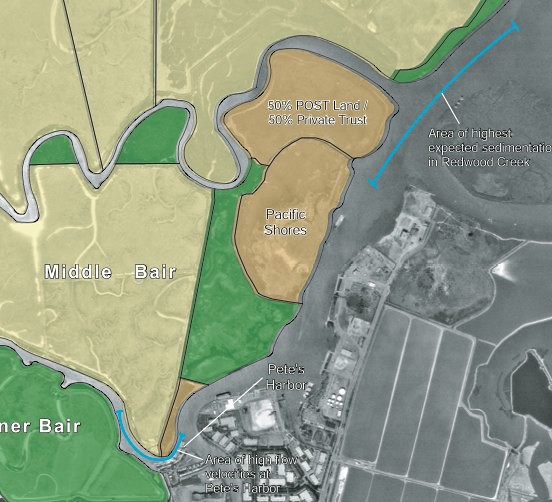Fun Days in Bernal Heights
Today I’m feeling deep appreciation for our sweet neighborhood in Bernal Heights. I spent the morning writing a book review in Pinhole Coffee, chatting with people sometimes and feeling thankful for JoEllen’s lovely cafe which gives such a good space for local community.
On the way home I ran into Frank from Good Life (we always say hello) and then Mike from Progressive Grounds who was blasting his friend’s band playing a cover of Minor Threat song from his bicycle.
Between the time I left and the time I came back, someone took half the books from our Little Free Bookshelf – leaving one of the guidebooks to Paris and the Penguin copy of Moby Dick. (Glorified name for what is just a wooden wine box on end, under the porch awning. It’s fun when other people leave books there, and I often read them and put them out again.)
I picked up some trash from the sidewalk and put it into the bin under our sidewalk bench made of stumps and a board. Someone sat there last night and had take out food and a cigarette. Someone else often comes and drinks a glass bottle of Squirt there, leaving the bottle… I wonder who it is, and I like them for having a habit, secretly visible to me though I never see them, only their distinctive bottles.
Running into Marc from Unicorn Precinct and having a rambly, jumping, lightning speed conversation about books and poems. He was reading Daniel Borzutzky and I felt like I recognized him (from ALTA conferences?) I told Marc about the neobaroque movement and he talked about his children’s play “Factory Full of Weasels”. Danny critiqued his copy of Jacobin magazine a bit (it has nice layout tho) and we both excitedly tried to explain the weird awfulness of “Politics and Apocalypse”. (Shudder.)
Down the street doing a quick errand I was chatting with El Ahorro owner and family as they are opening a sandwich shop in the back of the store – already a great neighborhood store.
Friends who live close by, coming over this afternoon for end of the year tea and black eyed peas.
The guy a few houses down must still be on vacation, his perpetual barbershop-and-garage-sale still closed for the holidays.
Next week I’ll go to the two free tai chi classes, one at the library, one at the senior center, a new habit in the making which will bring new acquaintances I’ve likely seen around the neighborhood.
It’s nice to live somewhere for years, to see the same people every day, in my usual haunts, feeling just a little connection to others, the opposite of isolated, knowing the usual ways the fog and afternoon wind rolls in and out through the gap in the hills, kind of like how we were aware of the tide when we lived on the houseboat in Pete’s Harbor.
[photo: a tiny zine called Fun Days in Bernal Heights, by the downtown zine kiosk owner]
